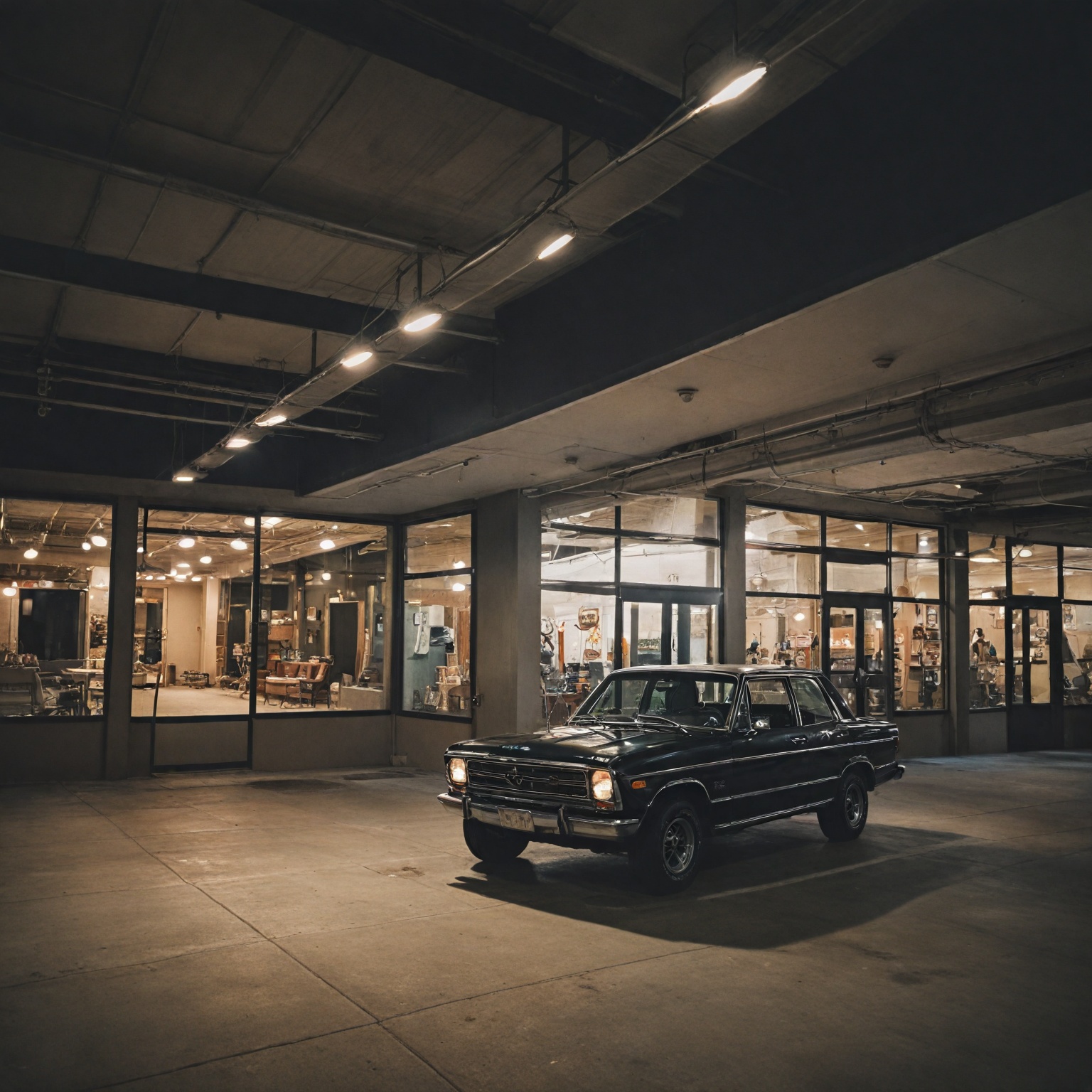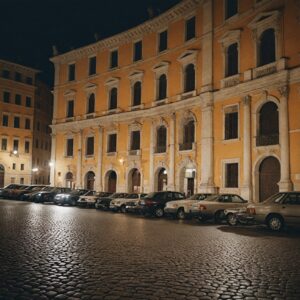Highlights:
– Revived Identity: Cadillac has strategically revamped its brand image by blending heritage with modern aesthetics, highlighting technological innovation like electrification and driver-assistance systems, positioning itself as a leader in luxury electric vehicles.
– Inclusive Marketing Approach: Cadillac's shift towards inclusive, identity-driven campaigns focused on leadership and lifestyle, while upholding intangible brand values, has effectively attracted new customer segments globally, evident in the successful market reception of the Lyriq with significant conquest rates and growth in European sales.
– Steady Progress: Despite challenges, Cadillac's decade-long efforts to reestablish itself as a premier luxury automaker have shown consistent advancements, emphasizing its commitment to electrification, luxury innovation, and maintaining cultural relevance in the evolving automotive industry markets.

Summary
Cadillac, once the epitome of American luxury and automotive prestige, has spent the past decade engaged in a determined effort to revive its standing as the quintessential American luxury car brand. After peaking in the mid-20th century, Cadillac faced declining market relevance beginning in the 1970s and 1980s, losing ground to European competitors such as Mercedes-Benz, BMW, and Audi, and grappling with a dated brand image that often labeled it as a “grandpa” car. This decline was exacerbated by strategic missteps within General Motors (GM), including delayed entry into key vehicle segments and challenges in balancing innovation with brand identity.
In response, Cadillac has pursued a comprehensive revival strategy centered on reestablishing a unique American luxury identity distinct from its German rivals. This includes adopting a refined “Art and Science” design philosophy that combines heritage with modern aesthetics, exemplified by flagship models like the bespoke Celestiq and the all-electric Lyriq. Technological innovation, particularly electrification and advanced driver-assistance systems such as Super Cruise and Ultra Cruise, has become a cornerstone of Cadillac’s transformation, positioning the brand at the forefront of luxury electric vehicles. Efforts to enhance exclusivity are further supported by limiting parts sharing with other GM brands and focusing on bespoke craftsmanship.
Marketing and brand positioning have also evolved, moving beyond traditional luxury tropes toward inclusive, identity-driven campaigns that emphasize leadership, innovation, and lifestyle. The brand’s historic advertising, including the seminal 1915 “The Penalty of Leadership” campaign, laid the foundation for this focus on intangible brand values. While some recent marketing efforts have faced criticism, Cadillac’s renewed messaging aligns with its product strategy and has contributed to notable successes, such as the Lyriq’s strong market reception—with a 76% conquest rate and significant growth in European sales—highlighting Cadillac’s appeal to new customer segments globally.
Despite facing significant challenges—including intense competition, shifting consumer expectations, and internal pressures tied to GM’s broader strategic priorities—Cadillac’s decade-long battle to revive its brand is marked by steady progress and ambitious plans for the future. The brand’s commitment to electrification, luxury innovation, and cultural relevance aims to restore its legacy as America’s premier luxury automaker amid a rapidly evolving automotive landscape.
Background
Cadillac has long been recognized as a symbol of American luxury and automotive excellence, reaching its peak status in the mid-20th century as the epitome of prestige and craftsmanship. However, by the 1970s and 1980s, the brand struggled to maintain this identity amid growing competition and shifting market dynamics. Over time, Cadillac became stereotyped as a “grandpa” car brand, losing ground to European luxury manufacturers such as Mercedes-Benz, BMW, and Audi, and falling to sixth place in luxury vehicle sales in the United States.
The challenges faced by Cadillac were compounded by General Motors’ broader strategic focus, which, while profitable for the company, often left Cadillac late to enter key vehicle segments. This resulted in missteps like the short-lived Cadillac ELR, an electric coupe based on the Chevrolet Volt, and the more recent discontinuation of the XT6 crossover, highlighting ongoing difficulties in maintaining competitive product offerings. Despite technological advancements such as the inclusion of the Super Cruise driver-assistance system, Cadillac’s sales declined sharply, with some models experiencing a 60 percent drop, raising questions about the brand’s future within GM’s portfolio.
In parallel to product and market challenges, Cadillac’s marketing approaches evolved to redefine the brand’s identity. While traditional advertising leaned heavily on overt displays of luxury and automotive features, more recent campaigns have embraced creative and inclusive styles, focusing on selling an identity rather than merely a product. For example, the “The Penalty of Leadership” ad broke from typical automotive advertising conventions by using subtle black-and-white imagery without mentioning cars or cylinders, instead embedding the Cadillac logo discreetly to emphasize brand philosophy over product specifics. This reflected a strategic shift aimed at reconnecting with consumers seeking meaning and distinction beyond physical attributes.
At the same time, innovations in vehicle design and interior experience have played a role in Cadillac’s efforts to reclaim its luxury status. Models like the OPTIQ showcase advanced features such as a curved 55-inch pillar-to-pillar display with 8K resolution for the driver and 4K for passengers, along with unique design elements like acoustic laminated rear-quarter panel windows and signature lighting choreography that enhances the vehicle’s high-tech and welcoming atmosphere. These features underscore Cadillac’s ambition to blend cutting-edge technology with classic stylistic cues to forge a distinctive identity in the competitive luxury market.
Revival Strategy
Cadillac’s revival strategy centers on reestablishing a distinct and compelling brand identity that moves away from previous attempts to emulate German luxury automakers. According to Carlisle, the focus is no longer on “out-Germaning the Germans,” but rather on finding and connecting with its own unique audience. This repositioning is critical as Cadillac aims to regain its prominence as the premier American luxury brand, a segment with higher profit margins and appeal to affluent customers.
A foundational element of Cadillac’s resurgence has been the adoption and evolution of its “Art and Science” design philosophy. This approach replaced the oversized and dated styling of the 1990s with clean, sharp lines and precise creases, helping the brand regain visual relevance and appeal. The design language is reflected in recent flagship models such as the bespoke Celestiq, which draws inspiration from historic Cadillac vehicles like the 1957 Eldorado Brougham and 1930s-40s Cadillac V-16, as well as the architectural influence of Eero Saarinen, symbolizing a blend of heritage and innovation. The Celestiq also exemplifies Cadillac’s bespoke production approach, allowing customers to customize their vehicles similarly to Rolls-Royce, thereby emphasizing exclusivity and craftsmanship.
Technological innovation remains central to Cadillac’s strategy. The brand has embraced electrification with a plan to offer a full lineup of electric vehicles alongside traditional gas-powered models, with an initial step being the launch of the all-electric Lyriq in 2022. This move aligns with broader industry trends and supports Cadillac’s goal of sustainability and modernity in luxury. The Lyriq has achieved notable market success, including a conquest rate of 76% and significant growth in European sales, indicating its role in attracting new customers and expanding Cadillac’s market presence internationally.
Beyond product development, Cadillac aims to differentiate its vehicles within General Motors by limiting parts sharing with other GM brands, focusing on exclusive interiors and unique powertrain components to maintain luxury distinctiveness. The emphasis on design and technology is coupled with a holistic vision of luxury, showcased in models like the Escalade IQ, which features advanced lighting design and a cutting-edge curved pillar-to-pillar display that delivers immersive, high-resolution screens for both driver and passengers.
In addition to product and brand strategy, Cadillac’s revival is supported by broader economic and community initiatives. Partnerships with organizations like the Michigan Economic Development Corporation (MEDC) emphasize placemaking and urban revitalization efforts, which help build vibrant environments that complement Cadillac’s luxury ethos and contribute to long-term economic resilience in key markets.
Product Line Developments
Throughout the past decade, Cadillac has embarked on a comprehensive transformation of its product lineup to reclaim its position as the quintessential American luxury car brand. This evolution encompasses both traditional internal combustion models and a strong pivot toward electrification, highlighting a blend of performance, technology, and luxury.
Cadillac’s reinvention began with the introduction of all-new models such as the XT6 three-row crossover SUV, and the CT4 and CT5 sedans, designed to appeal to a younger and more dynamic demographic. These vehicles complement the refreshed XT5 crossover SUV and replaced older powertrain options, including discontinuing the 3.0L twin-turbo V6 engine in the CT6. The CT6 itself, produced from 2016 to 2020, embodied Cadillac’s commitment to innovation by introducing a lightweight platform and advanced driver-assistance technologies, notably Super Cruise—the first true hands-free driving system for highways. It also featured a range of premium audio systems developed in collaboration with Bose, ranging up to a 34-speaker Panaray Surround-Sound System that created an immersive in-cabin experience.
Performance has been a key focus within the lineup, exemplified by the CT4-V Blackwing and CT5-V Blackwing sedans, delivering up to 472 hp and 668 hp respectively, catering to enthusiasts seeking high-performance American luxury sedans. The Escalade SUV, Cadillac’s flagship, entered its fifth generation in 2020 with a debut in Beverly Hills. Despite production delays from the COVID-19 pandemic, sales commenced in late 2020. Cadillac also expanded its performance portfolio by launching the Escalade-V in 2022, the largest performance SUV in the American market, powered by a supercharged 6.2-liter V8 engine.
A significant part of Cadillac’s product development strategy centers on electrification and advanced technology integration. The brand’s first all-electric SUV, the Lyriq, launched with a focus on sharp styling, modern cabin design, and a competitive driving range of up to 308 miles per charge. This model has demonstrated strong market appeal, with a conquest rate of 76% and over half of its buyers being new customers to General Motors. European sales surged by over 200% in the first quarter following its introduction, underscoring the vehicle’s impact. Building on the Lyriq’s foundation, Cadillac revealed the Celestiq—a one-of-a-kind, ultra-luxury electric sedan showcasing the pinnacle of the brand’s design, performance, and craftsmanship. Set for limited production starting in late 2023, the Celestiq will feature GM’s next-generation “Ultra Cruise” driver-assistance system and GM’s Ultium battery technology, with pricing anticipated near $300,000.
Looking ahead, Cadillac continues to innovate with concept vehicles like the OPTIQ, which combines youthful and sporty aesthetics with sophisticated interior technology. Features such as the precision-patterned acoustic laminate glass and choreographed lighting sequences when the driver approaches exemplify Cadillac’s dedication to delivering an intuitive, luxurious, and connected cabin experience. The brand’s emphasis on high-tech, immersive interior elements is further highlighted by the inclusion of a curved pillar-to-pillar 55-inch display, offering 8K resolution for the driver and 4K for the passenger, reinforcing Cadillac’s position at the forefront of luxury automotive technology.
In sum, Cadillac’s product line developments over the past decade illustrate a deliberate shift toward combining American luxury tradition with cutting-edge technology and electrification, supporting its mission to revive the brand as a leader in the luxury automotive market.
Marketing and Brand Positioning
Cadillac’s marketing strategy has long centered on establishing and maintaining its identity as the premier American luxury brand. From its early advertising efforts to recent campaigns, the brand has emphasized themes of leadership and exclusivity to differentiate itself in a highly competitive market. A landmark moment in Cadillac’s marketing history was the 1915 advertisement in the *Saturday Evening Post*, created by pioneering ad-man Theodore F. MacManus. This advertisement, titled *The Penalty of Leadership*, contained no images of automobiles but instead featured a powerful essay extolling the responsibilities and challenges inherent in being a market leader. It remains one of the most celebrated pieces of advertising copy in automotive history and set a precedent for the brand’s focus on intangible values beyond mere product features.
Throughout its history, Cadillac has repeatedly invoked the concept of “leadership” in its marketing. This theme has been deeply ingrained, even reflected in slogans like “The Standard of the World,” which was prominently displayed in the brand’s logo for decades. Despite this longstanding association, more recent campaigns have met with mixed reactions. For example, Cadillac’s newer tagline, “The Mark of Leadership,” has faced criticism for its ambiguous wording and for potential negative associations with competitors or less refined aspects of the brand’s image, such as the heavily adorned Escalade models that some view as lacking aesthetic sophistication.
The challenge for Cadillac’s marketing has been to evolve with changing consumer expectations while maintaining the brand’s core identity. In today’s market, consumers seek not only products but also an identity and lifestyle that the brand represents. Companies that succeed are those that adopt creative and inclusive marketing approaches that resonate on a deeper level with customers. Cadillac’s recent efforts have aimed to position the brand as a symbol of refined leadership and innovation, especially in the luxury electric vehicle segment.
Supporting this, Cadillac’s current strategy integrates design, performance, and value to attract new customer segments. For instance, the electric Lyriq model has achieved a conquest rate of 76%, with over half of its buyers being new to General Motors. Moreover, European sales of Cadillac vehicles increased by more than 200% in the first quarter, signaling growing international appeal. These results suggest that Cadillac’s renewed focus on distinct design and leadership messaging is successfully resonating with modern luxury consumers.
Challenges and Obstacles
Cadillac’s journey to reestablish itself as the quintessential American luxury car brand has been fraught with numerous challenges and obstacles. While the brand once epitomized American luxury in the mid-20th century, it began to struggle to maintain that identity during the 1970s and 1980s, leading to a gradual decline in its market position and consumer perception. This decline was compounded by intense competition not only from its traditional domestic rival, Ford’s Lincoln brand, which historically sold about a third of the luxury vehicles in the U.S. compared to Cadillac, but also from a growing number of international luxury manufacturers from Germany, Japan, and South Korea entering the market.
In addition to competitive pressures, Cadillac faced difficulties in effectively differentiating itself in a crowded luxury segment. The brand had to contend with shifting consumer expectations, where buyers sought not only high-quality vehicles but also a distinct identity and emotional connection through marketing and product design. Many companies find it challenging to break free from conventional advertising strategies, and Cadillac was no exception; it had to invest in creative and inclusive marketing approaches to appeal to modern consumers who increasingly look to purchase a lifestyle or identity alongside a physical product.
Moreover, Cadillac’s efforts to modernize and innovate were met with internal and external hurdles. For example, while the company has been pushing its electric vehicle strategy, emphasizing design, range, and price value to attract new customers, this transition required significant investment and adaptation within the brand’s portfolio and manufacturing processes. Despite these challenges, Cadillac’s initiatives, such as the launch of the Lyriq electric vehicle, showed promising results in customer acquisition, with a conquest rate of 76% and a substantial increase in European sales by over 200% in the first quarter, signaling gradual progress amid adversity.
Impact and Outcomes
Cadillac’s efforts to revive its position as the quintessential American luxury car brand have yielded mixed but increasingly positive results over the past decade. Central to General Motors’ strategy has been positioning Cadillac as the lead electric vehicle (EV) brand, which executives view as a critical opportunity to reverse the unit’s longstanding challenges and achieve success in a rapidly evolving market.
A key component of Cadillac’s recent impact is its focus on electric vehicles that combine compelling design, competitive range, and attractive pricing to appeal to new customers. The Cadillac Lyriq, for instance, has demonstrated a conquest rate of 76%, with over half of its buyers representing new GM customers. This has translated into significant growth, including a remarkable increase of over 200% in European sales during the first quarter following its launch.
Despite GM’s traditional emphasis on prioritizing volume over value—which has historically benefited the company’s profitability but posed challenges for Cadillac’s luxury positioning—the brand has steadily worked to reclaim its identity as a symbol of American luxury and innovation.
Beyond product strategy, Cadillac’s broader impact is reflected in how it has influenced and been influenced by cultural and marketing trends. The brand’s marketing has long emphasized “leadership,” a theme deeply embedded in its identity and even its logo, reinforcing Cadillac’s aspiration to lead the luxury automotive segment. This focus on leadership and innovation aligns with modern consumers’ desires to buy not just a product, but an identity—a trend that Cadillac has harnessed to enhance its appeal in a competitive marketplace.
Future Prospects
Cadillac’s future product lineup is set to undergo significant transformation, with the 2023 model year marking a pivotal moment in the brand’s strategy to regain its
The content is provided by Avery Redwood, Front Signals

















